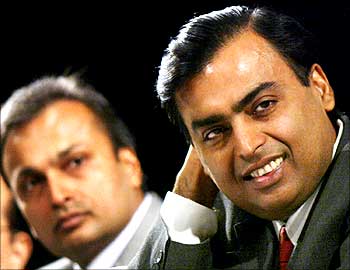
Rediff Business Desk
There seems to be no end to the internecine Ambani war. Even four years after splitting the Reliance empire, the Ambani brothers still seem to be washing dirty linen in public: the latest battle is over gas pricing.
Mukesh and Anil Ambani are at loggerheads again over a gas-supply agreement that was made when the Dhirubhai Ambani-founded Reliance group was split in 2005.
The gas sale master agreement between Reliance Industries Ltd and Reliance Natural Resources Ltd states that the latter (RNRL) is entitled to be supplied 28 million cubic metres of gas a day from the Krishna-Godavari (KG) basin at a price of $2.34 per million British thermal unit (mBtu) for a period of 17 years.
The Bombay High Court ruled in June that RIL should supply gas to RNRL at nearly half the price it had set in an interim order in January.
With the government reacting strongly against the warring brothers' stance over a national resource, it is now left to the Supreme Court to decide the future course of action...
The Supreme Court on its part has scheduled a hearing in the case for September 1. But read on to find out what this is all about...
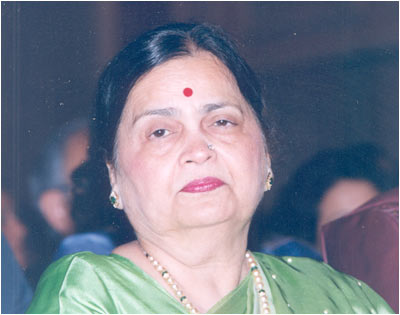
The Reliance group was divided with Kokilaben Ambani, mother of the warring Ambani brothers, presiding over the division.
Further complicating the issue is the fact that the government has claimed a share in the gas pie.
A few years ago, gas fields in the Krishna-Godavari basin off the coast of Andhra Pradesh, were won by Mukesh Ambani-led Reliance Industries when it bid for areas offered under New Exploration Licensing Policy (NELP).
These gas finds are one of the biggest discoveries in Asia. Although Mukesh Ambani won the contract for the gas fields, Anil who has ambitious mega power plants lined up wants a part of this gas at a lower rate, in line with the family agreement.
RIL was guaranteed free market regime when it bid for these gas fields, and thus the RIL argument is that any attempt to regulate prices would be against the contract.
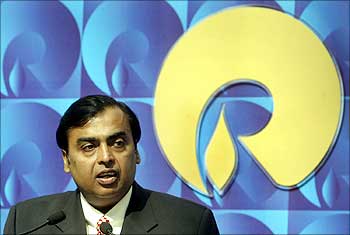
Since the time the family pact was drawn, hydrocarbon prices have skyrocketed and thus the price at which Anil Ambani wants gas from RIL has become a major bone of contention.
Even the petroleum ministry frowned at the rate of $2.34 per million Btu at which Anil Ambani wants gas for a period of 17 years.
Earlier, the government had set up a committee to derive the price at which gas from the KG Basin could be given to the Anil Ambani group. The committee, led by Finance Minister Pranab Mukherjee came up with the figure of $4.21 per unit.
Reliance, meanwhile, has refused to supply gas at a lower price. The Mukesh Ambani-led petrochemicals giant said that the company is ready to supply the gas to RNRL at the government-approved price of $4.21 per mBtu.
The Bombay high court had in June asked Mukesh and Anil Ambani to reach an agreement by renegotiating conditions. The court also said they may seek their mother, Kokilaben Ambani's, help in this matter.
The high court passed an order in favour of Anil Ambani-led RNRL and directed RIL to supply 28 million units to Reliance Natural Resources for 17 years at $2.34 per unit, after assigning 12 million units to the National Thermal Power Corporation.

Unhappy with the court ruling, RIL moved the Supreme Court against the Bombay high court order. If the deal does not work out, RNRL will have to shell out more money for its gas requirements for its power plants.
Reliance will be hit as it will be forced to sell at least 35 per cent of its natural gas production according to the memorandum of understanding, if it offers gas at a rate lower than the $4.21 rate set by the government.
However, the royalty payable to the government on 35 per cent of the total gas produced will have to be paid at the higher rate of $4.21.

Meanwhile, the petroleum ministry too joined the war as owner of the gas saying that it was a natural resource and thus belonged to the nation and not to the brothers Ambani.
Petroleum Minister Murli Deora hit out at the Ambanis for fighting over a natural resource that belongs to the government and the people of the country.
"I am appalled and disgusted at how these two brothers are fighting over something that belongs to the government and the people of India," Deora said, adding, "It does not belong to them."
The petroleum ministry said that the Ambani family pact be declared null and void. The ministry told the Supreme Court that the Indian government had the sovereign ownership over natural gas and its distribution, and RIL was just a contractor on behalf of the government. The ministry also stated that the family agreement between the Ambanis could not be binding upon the government.
Petroleum Minister Murli Deora asserted that the KG basin gas belongs to the government and not to either of the Ambani brothers, Mukesh and Anil, who have taken the battle to court.
Anil Ambani accused the oil ministry of doing a volte-face on gas pricing, saying its stand in the Supreme Court was in total variance with what it had said in Parliament.
Stung by the turn of events and to seek protection against what he called the overt and covert attempts and 'partisan and biased approach' of the petroleum ministry to intervene in a commercial dispute with RIL, Anil Ambani wrote to Prime Minister Manmohan Singh offering to meet and explain the issues.
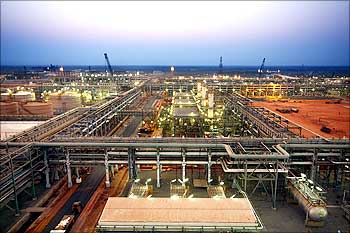
Incidentally, the news of the letter dated July 15, surfaced on a day when the Supreme Court was to hear cross-appeals filed by RNRL and RIL over the Bombay high court order on the gas row.
In response to the cross-appeals, the government first in its affidavit and then through a separate petition asserted its rights to fix gas prices and its utilisation.
However, the government had on many occasions stated in Parliament that it 'does not fix gas price' and that under the Production Sharing Contract 'the operators have freedom to market the gas...' RNRL said.
Meanwhile, Andhra Pradesh Chief Minister Y S Rajasekhara Reddy has asked the central government to intervene in the case as the state was losing out on the benefits of the natural resource, found off its coast.
The Andhra Pradesh government too has sought its due share of the hydrocarbon asset.
Reddy has called for changes in the gas distribution process so that the gas requirements of the state's industry and power projects were met.
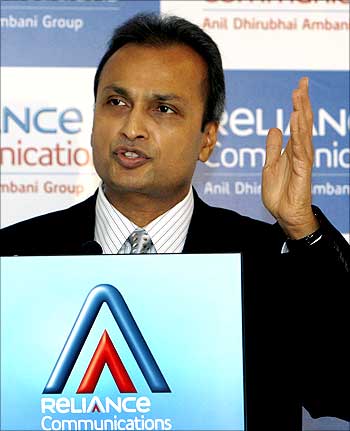
The Supreme Court has now turned down RNRL plea to reject the government's petition seeking to become an independent party in the Krishna-Godavari gas dispute.
A two-judge Bench headed by Chief Justice K G Balakrishnan heard arguments on gas allocation by RIL, RNRL, the government and some independent power companies. The court directed the matter to a three-judge Bench, which will now hear the case on September 1.
Seeking to set aside a Bombay high court order, which had asked RIL to supply gas to RNRL at $2.34 per mmBtu, the government said it contradicted its gas allocation policy that favoured priority sectors like fertiliser and power.
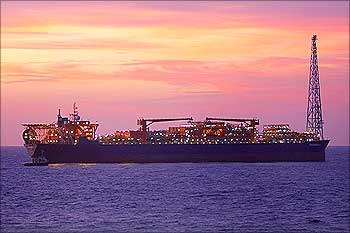
With the Ambani brothers fighting over the country's scarce natural resource, the government has raised its voice against dragging a family dispute over a national property.
The Union government wants the MoU between the Ambani brothers, to be quashed on the ground that the Ambani brothers don't own the gas.
The court also sought responses from RIL and RNRL on the government's stand that it has sovereign right over natural gas in the country.
The Supreme Court on Monday asked Mukesh Ambani-run Reliance Industries Ltd and Anil Ambani group firm Reliance Natural Resources to reply to the government's prayer for declaring 'null and void' their family agreement on gas supply, and posted the matter for hearing on September 1.
The government had wanted the Apex Court to allow RIL to continue sale of gas to users other than RNRL.
The Supreme Court also issued notices on the applications filed by customers of RIL seeking to intervene in the gas supply dispute the company has with RNRL.
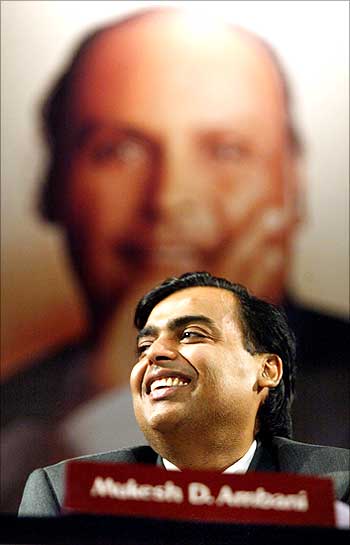
Reliance started producing gas from the KG basin in early April and expects to produce up to 40 million metric standard cubic metres per day (mmscmd) of gas by July end and then scale it up to 80 mmscmd by the end of the year.
From this production, the government has allocated 15 mmscmd for fertiliser companies and 18 mmscmd of natural gas for the power sector.
RIL has signed gas sale pacts with 12 urea manufacturers and other power utilities. All the contracts were signed with on the condition that they would be subject to the high court's final order.
The court asked RNRL and RIL, to respond to the plea of private power companies. The Bombay High Court ruling upholding allocation of gas to RNRL as per the MoU would hit these companies.
Power companies say that gas supply from KG-D6 fields would be affected if the fuel is offered to Reliance Natural Resources Ltd (RNRL) at cheaper rates. GMR Group, Torrent Power and GVK Industries have complained of unfair pricing.
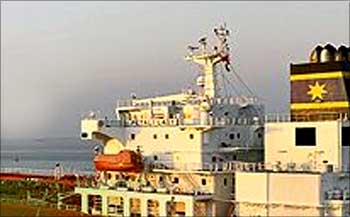
1999: The New Exploration Licensing Policy takes off with the government inviting global tenders for exploration in oil and gas fields. Reliance and NIKO emerge successful bidder of KGD6.
2004: The Production sharing contract (PSC) comes into effect between the government, Reliance and Niko.
2005: An MoU is signed between family members. Anil Ambani resigns as RIL joint managing director.
2006: RNRL files a case against RIL over gas supply.
2007: Company judge restrains RIL from creating third party rights in gas meant for RNRL.
October 2007: Government approves market price determined by RIL at above $4.20 mmBtu.
Oct 15, 2007: Company Judge upholds RNRL's case, says MoU between parties binding.
December 2007: RIL and RNRL file separate appeals against October 15, 2007 judgment.
September 23, 2008: At the Annual General Meeting of Reliance Natural Resources Ltd, Anil Ambani, said his company had tried to negotiate with Reliance on the gas supply dispute, but all its efforts were thwarted.
January 8, 2009: Empowered Group of Ministers (EGoM), which met on January 8, to decide on issues pertaining to commercial utilisation of NELP, takes note of the production profile of KG-D6 field. The production is expected to reach plateau of around 80 mmscmd by 2012.
January 30 2009: Bombay high court passes Interim order lifting stay on sale of gas from KGD6. But Mukesh Ambani tells RNRL that it would not sign any agreement on the gas supply issue without approval of the government.
June 15, 2009: Bombay High Court asks RIL and RNRL to honour the 2005 MoU.
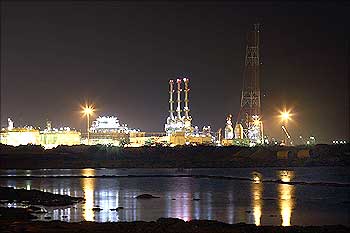
Reliance Industries discovered oil and gas in a shallow-water exploration block in the hydrocarbon-rich Krishna Godavari basin off India's east coast in December 2005.
Reliance with its subsidiaries is India's largest exploration acreage holder in the private sector with a portfolio comprising the following:

Mukesh Ambani and Anil Ambani have many key aides who strongly fought for protecting their company's interests over the years.
While Kokilaben Ambani had a tough balancing act to perform when she split the Reliance empire, meet the men who played a key role in helping the brothers win their battle for supremacy.
Kokilaben Ambani was helped by former ICICI Bank CEO K V Kamath to reach a settlement. Kamath played the role of an arbitrator.
Mukesh's Team
Anand Jain, Chairman of Jai Corp has played a key role in the RIL war.
V. Balasubramanian is one of Mukesh's most trusted aides. He played a significant role during the days of the build-up of the Reliance Empire. He served as president of Reliance Industries. He chose the Mukesh Ambani camp.
Manoj Modi chief of Reliance Retail played the role of a key strategist.
Nikhil & Hital Meswani: Nikhil Meswani, Ambani's cousin and executive director at RIL is said to be very close to Mukesh Ambani. Nikhil and brother Hital, have been touted as the 'second most important pair of brothers in India Inc', after Mukesh and Anil.
Mukesh's close aide Parimal Nathwani Reliance Mart group president is also Jharkhand Rajya Sabha MP.
Shankar Adwal also played a key role in the battle.
Anil's Team
Amitabh Jhunjhunwala, vice-chairman, Director, Reliance Capital is Anil's main advisor.
Tony Jesudasan who was group adviser, Reliance is said to be Anil's right hand. He was actively involved in the settlement issue representing the Anil's interests.
Satish Seth, Director of Reliance Energy had a major role in strategising and overseeing businesses in petrochemicals, petroleum, telecommunication and power sector in the Reliance empire.
Cyril Shroff, Managing partner, Amarchand Mangaldas played the role of the legal brain behind in Anil's team.
Among politicians, Samajwadi Party (SP) General Secretary Amar Singh is Anil Ambani's close friend.